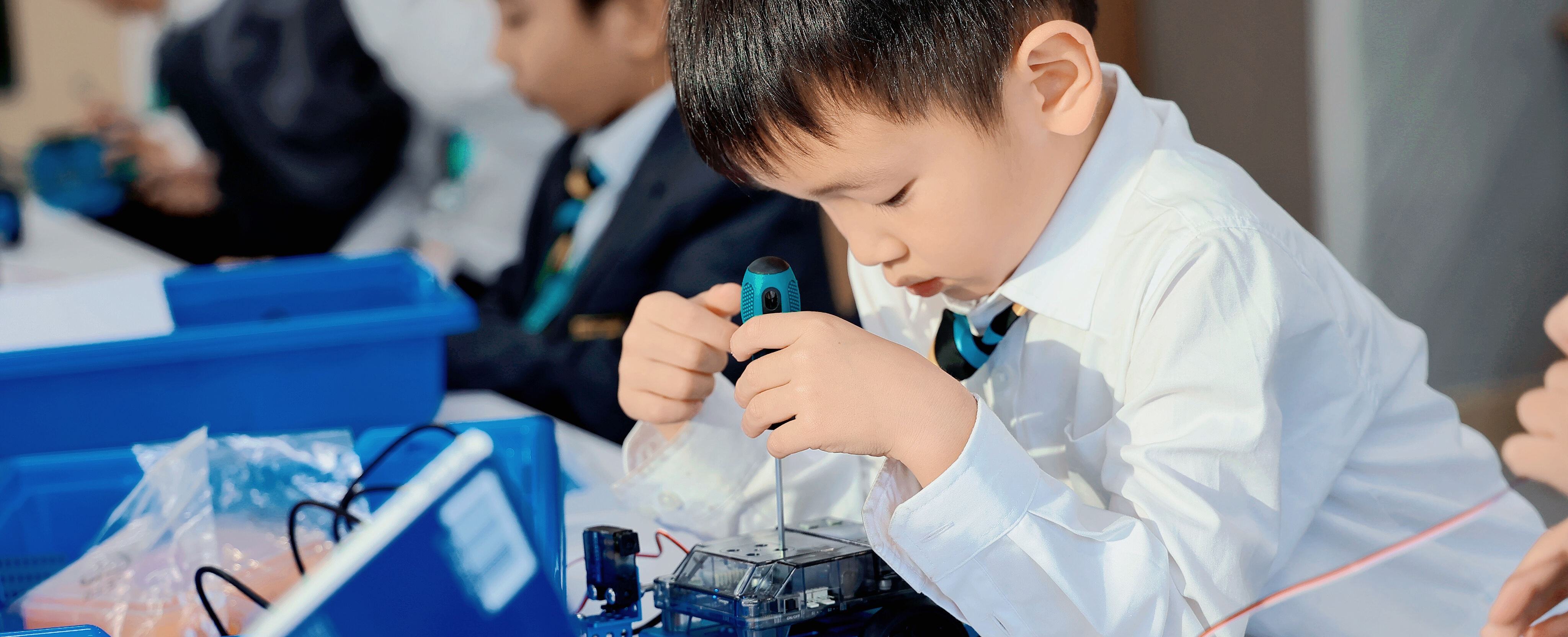
In addition to having fun learning about science, our goal is to help pupils develop a solid knowledge of what it is all about. On their journey to learn the truth, we anticipate that our pupils will use this as a starting point, always brimming with respect and curiosity for everything in the universe.
How do we make a science classroom full of lots of knowledge fun and challenging? Let's go into the science classroom at Huili School Nantong and find out...
神奇的活性炭过滤
Magical activated carbon filtration
In a recent science lesson, Mr Chang took the children through a hands-on unit on 'filtration' using activated charcoal. “Can such a dark mass effectively filter murky water?” Pupils were sceptical at first. Mr Chang didn’t explain to the pupils immediately because he thought that letting them feel what they were experiencing first-hand through the experiment would help them remember it better than just hearing it verbatim.
Pupils placed activated charcoal into a funnel that was lined with filter paper. Pupils attempted to use this straightforward filtering apparatus to transform murky water into clean water while being guided by Mr Chang. Pupils ran into a number of issues during the process, and after making several attempts to figure out for themselves what went wrong, they finally came up with a list of dos and don'ts for the filtration procedure.
Isn't this a lot more engaging and exciting than simply reading plain words out loud from a book? Science is a constant process of identifying problems and solving them. Pupils gain knowledge through this process, as well as the capacity to continuously review and summarise when a difficulty arises. These competences can also be used across different fields, and they will properly prepare you for further study in more challenging courses.
看得见的“声音”
Visible "sound"
How can sound be seen? I'm sure you were confused when you read the title. In our science lab, Mr Chang showed pupils how to see “sound”.
Mr Chang placed 2 identical tuning forks side by side and hung a ping pong ball close to the edge of the distal fork. When the proximal fork was struck, the distal fork also vibrated and drove the ping pong ball to bounce. Pupils were amazed to see this phenomenon... sound really can be seen! Mr Chang took this opportunity to share with pupils knowledge about the frequency of sound and the propagation of sound.
But the pupils were not content with this, and they scrambled to ask questions around the phenomenon: “Will this happen if two different tuning forks are put together?” “What if we change the position of the 2 tuning forks?” “What if there are objects between the tuning forks?” Following the pupils' inquiries, Mr Chang encouraged them to try it out on their own, applying the information they had just been taught to actively investigate the riddle.
In this experiment, pupils had fun with the activity and also gained a firm grasp of basic scientific principles and logical thinking. In the process they also became familiar with the scientific discipline itself, the language of science and the terminology used in scientific methodology.
Science experiments are taught at Huili School Nantong through a range of engaging hands-on activities. We hope that through clever and scientific curriculum design, pupils will become self-motivated and engaged in their own learning. We hope our pupils' natural curiosity to serve as a continuing source of learning motivation. In their future studies, pupils will also have the opportunity to gain an in-depth understanding of medicine, engineering and biochemistry, and to contemplate preferred majors and future career paths at top universities.